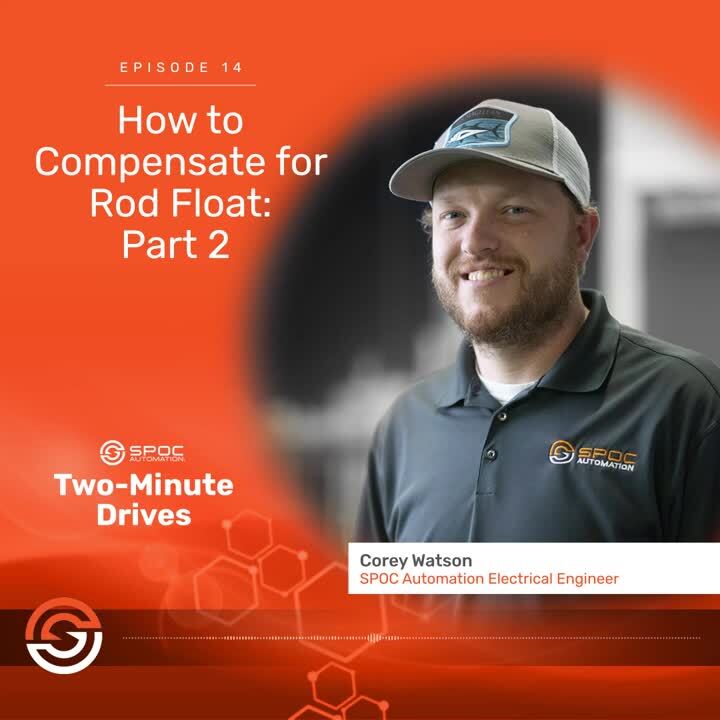

Hi, my name’s Cory Wesson and I’m an electrical engineer at SPOC Automation. In my previous video, we discussed rod float. Today, I want to dive a little deeper into how to compensate for rod float using a variable speed drive.
So, the first thing you can do using a variable speed drive is to slow down your output frequency, thus reducing your total strokes-per-minute. Another way to do this is to create a unit that is counter-weight heavy. And reduce the running torque in your drive. So that when your carrier bar and your polished rod become separated, you will have a torque-limit mode and that will reduce your output speed for that portion of the stroke. Thus, this allows you to maintain your overall strokes-per-minute.
A lot of systems have positive-position feedback using an encoder or a hall effect sensor. And if you have a system like this, then the section in which the rod and the carrier bar become separated, you just slow down the unit in those sections.
Finally, you could always put a limit-switch or a Prox sensor on the crank arm at the portion of the stroke where the polish rod and the carrier bar come separated. You take that limit switch or the Prox sensor and tie to a digital input on your drive and program that digital input to force minimum speed. So, the portion of the stroke where the input is made, you will reduce to min speed, thus eliminating your rod float.
I hope these tips and tricks help and have a great day.